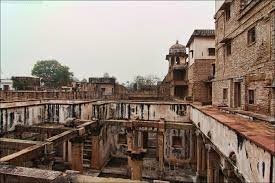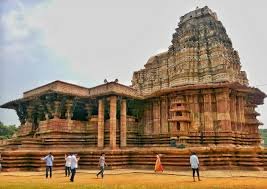Nestled in the historic town of Chanderi, Madhya Pradesh, the Raja Rani Mahal stands as a testament to India’s rich architectural heritage and the grandeur of its bygone eras. This magnificent complex, comprising two distinct palaces—the Raja Mahal and the Rani Mahal—offers a captivating glimpse into the opulence and craftsmanship of ancient times. As you explore the intricate designs and storied past of this site, you’ll be transported to a world where history and art converge seamlessly. read more about Raja Rani Mahal Rajnagar.
Historical Background
The origins of the Raja Rani Mahal trace back to the 15th century, a period marked by significant architectural advancements in the region. Chanderi, strategically located on the trade routes of Central India, became a cultural melting pot under various dynasties, including the Bundela Rajputs and the Khiljis. The Raja Mahal, an imposing seven-story structure, is believed to have been constructed during the Khilji period, showcasing the architectural prowess of that era. In contrast, the Rani Mahal, a more modest two-story edifice, predates the Raja Mahal and reflects an earlier architectural style. Together, these palaces encapsulate the evolving design sensibilities of their respective periods.
Architectural Marvels
The Raja Rani Mahal complex is a harmonious blend of two distinct architectural styles, each reflecting the era and purpose of its construction.
Raja Mahal
The Raja Mahal stands as a seven-story testament to the grandeur of its time. Constructed from grey and white sandstone, this imposing structure features elaborate carvings that narrate tales of valor and devotion. The palace boasts large courtyards, elegant stairways, and beautifully carved pillars, all leading to open pavilions on the terrace that offer panoramic views of Chanderi. An intriguing aspect of the Raja Mahal is its underground passage, which connects it to the nearby Rani Mahal, hinting at the strategic considerations of its architects.
Rani Mahal
In contrast to the towering Raja Mahal, the Rani Mahal is a two-story structure exuding understated elegance. Its architectural style suggests an earlier period, with simpler yet graceful designs. The palace’s modesty does not detract from its beauty; instead, it offers a serene ambiance that complements the grandeur of the adjacent Raja Mahal. The juxtaposition of these two structures within the same complex provides a unique insight into the architectural evolution of the region.
Cultural Significance
Beyond its architectural splendor, the Raja Rani Mahal holds immense cultural significance. Chanderi was once home to approximately 260 palaces, of which only 43 have survived the test of time. The Raja Rani Mahal is among the few that still grace the landscape, serving as a tangible link to the region’s illustrious past. The complex not only exemplifies the architectural brilliance of its era but also offers insights into the socio-political dynamics and lifestyle of the time. Today, it stands as a symbol of Chanderi’s rich heritage, attracting historians, architects, and tourists alike.
Restoration and Preservation
In recent years, the Raja Rani Mahal has undergone significant restoration efforts to preserve its structural integrity and historical authenticity. Organizations like the Indian National Trust for Art and Cultural Heritage (INTACH) have played a pivotal role in these endeavors. The restoration process has not only stabilized the structures but also revitalized their aesthetic appeal, ensuring that future generations can continue to marvel at this architectural gem. Additionally, the palace now houses looms set up by the NGO Chanderiyaan, providing training in weaving, block printing, and tailoring to local youth, thereby intertwining heritage conservation with community development.
Visiting the Raja Rani Mahal
For those planning to visit, the Raja Rani Mahal is located approximately 2 kilometers from the Chanderi Bus Station, in the Inner Town area known as Andar Sheher. The site is open to visitors from 6 AM to 6 PM, and entry is free. As you wander through the expansive courtyards, ascend the elegant stairways, and admire the intricate carvings, you’ll gain a profound appreciation for the artistry and history encapsulated within these walls. The juxtaposition of the grandiose Raja Mahal and the serene Rani Mahal offers a comprehensive experience of the architectural and cultural narratives of Chanderi.
Conclusion
The Raja Rani Mahal in Chanderi is more than just a historical monument; it is a narrative etched in stone, reflecting the artistic brilliance and cultural richness of India’s past. Its unique blend of architectural styles, coupled with its storied history, makes it a must-visit destination for anyone interested in exploring the depths of India’s heritage. As you stand amidst the grandeur of the Raja Mahal and the elegance of the Rani Mahal, you’ll find yourself transported to an era where art and architecture were expressions of a civilization’s soul.
In preserving and celebrating such monuments, we not only honor our history but also inspire future generations to appreciate and uphold the rich tapestry of our cultural legacy. The Raja Rani Mahal serves as a timeless reminder of the splendor that once was and the enduring beauty that continues to captivate all who visit.





